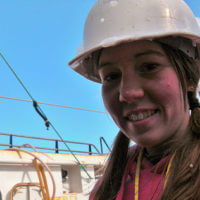Assessment of the benthic impacts of raised groundgear for the Eastern Bering Sea pollock fishery
The Alaska pollock (Gadus chalcogrammus) fishery in the Eastern Bering Sea (EBS) is a major contributor to domestic and global fish production. However, regulations governing groundgear construction (trawl components that contact the seafloor) have limited opportunities to experiment with new gear designs aimed at minimizing potential effects on the seafloor and Essential Fish Habitat (EFH). In this thesis, alternative trawl footropes designed to fish just above the seafloor were tested. The designs varied by weight and rope materials, and were evaluated based on reduced seafloor contact, impacts to structure forming invertebrates, and effective height above the seafloor. Video and sonar data were used to compare seafloor contact and sea whip (Halipteris willemoesi) condition between impacted areas and adjacent unaffected control areas. The designs successfully reduced direct seafloor contact by 95-97% of the nominal contact. A susceptibility analysis showed 2.4 – 16.1% more downed sea whips in impacted areas than in control areas. The contact and susceptibility impacts were greater with footropes comprised of heavy rope materials than more buoyant materials.
Bottom contact sensors were used to determine the height of the footrope above the seafloor, and 117 mean measurements of height above the seafloor were obtained. For the footrope components, 75% were raised more than 10.2 cm (4 in) above the seafloor, enough height to avoid most benthic features. While work is still required to determine the implications of these modifications for target species catch and bycatch, these results indicate a potential for substantial reductions of benthic interactions with trawl gear. coast..
Funding for this work was provided by the Pollock Conservation Cooperative via the Alaska Education Tax Credit Program.
Current Status: Fisheries Policy Analyst, Alaska Marine Conservation Council (Anchorage, AK)

